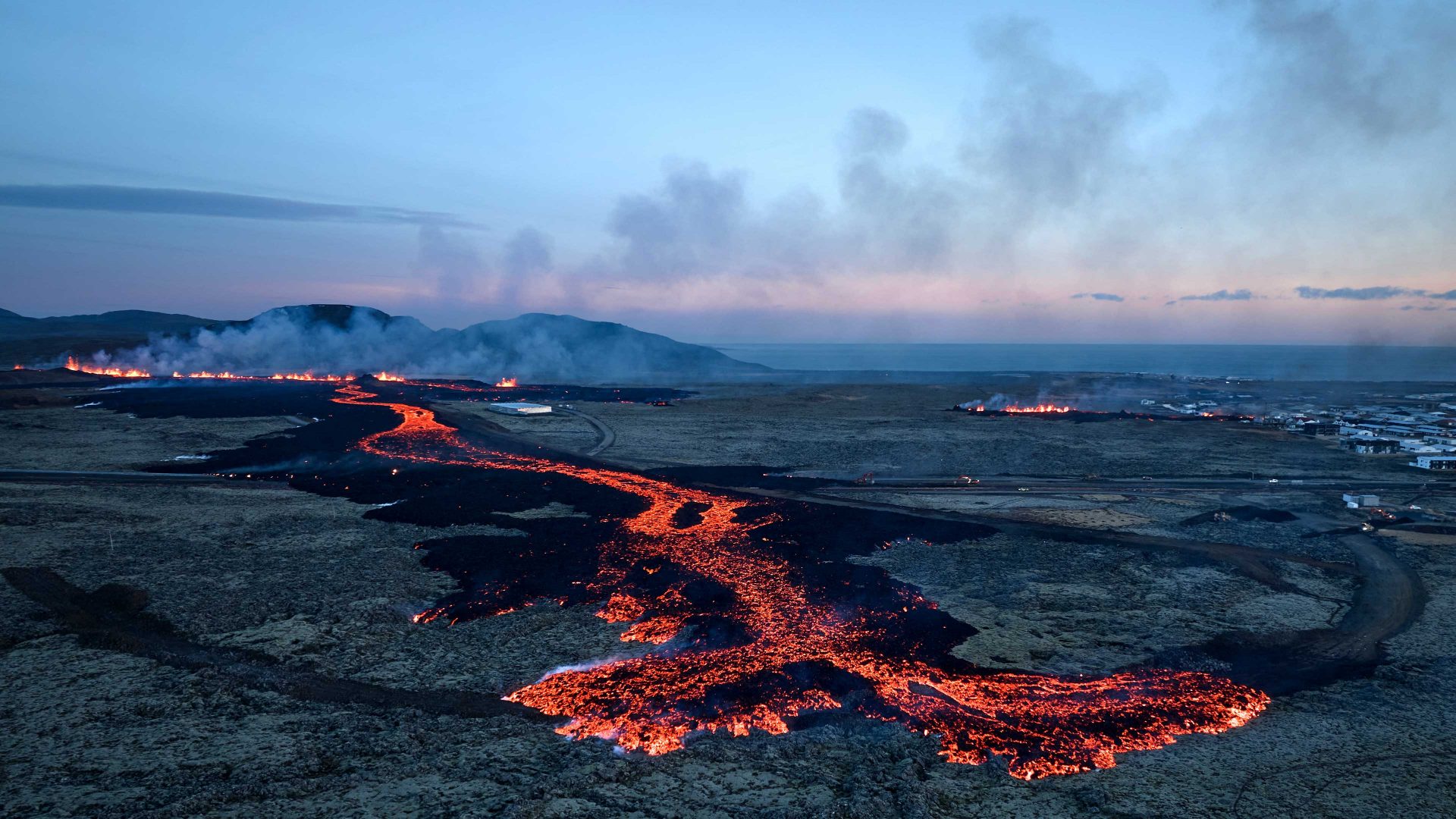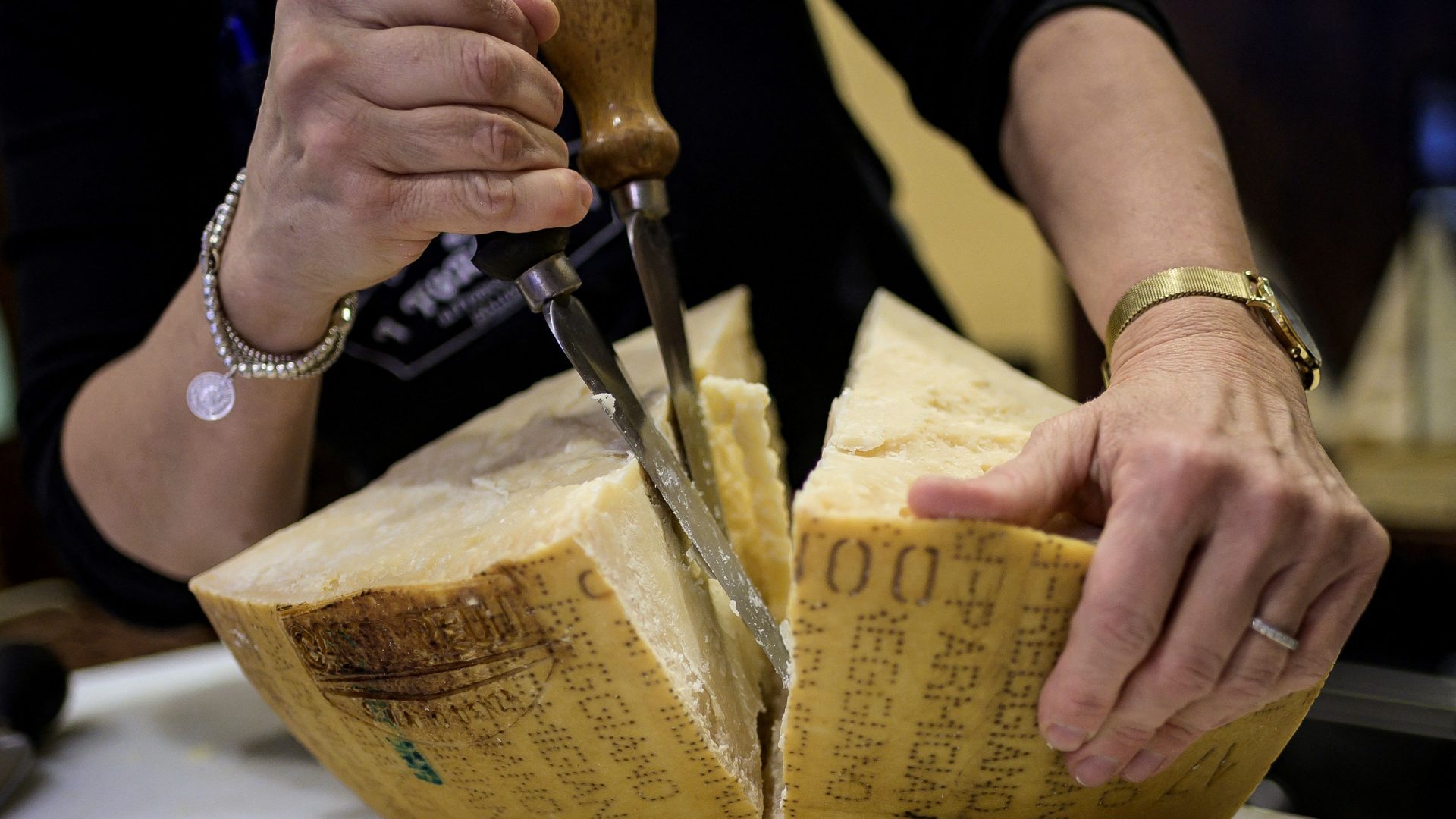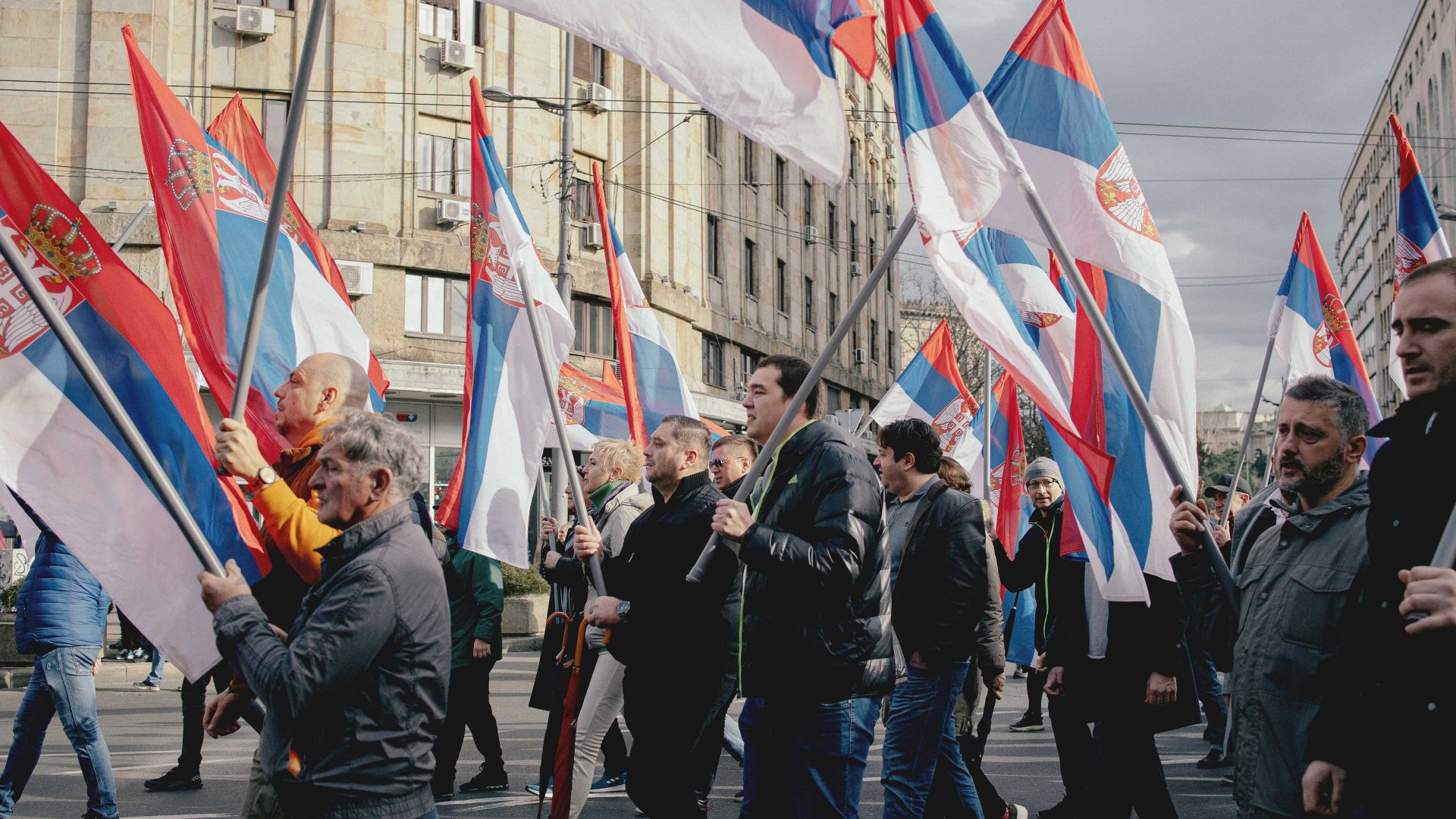Just before 8am on Sunday, the earth cracked open near Grindavík, in the south-west of Iceland, and a 900-metre-long wall of fire emerged.
The small fishing town on the Reykjanes Peninsula had been evacuated in mid-November, and there was also an eruption in late December. After that, some residents returned to Grindavík, meaning that about 90 homes were occupied on Saturday night. Then an earthquake swarm hit, and it became clear that magma was building below the town. An evacuation order was issued just hours before the eruption.
Lava was soon flowing over the Grindavíkurvegur road and along the protective walls. A second fissure erupted around half past noon just outside the town limits, by which time the lava was flowing into Grindavík, heading towards homes. Police and rescue squad members shouted at reporters to move away from the area. By early afternoon on Sunday, three houses had been consumed by fire.
Víðir Reynisson, director of civil defence, underscored the gravity of the situation when he spoke to reporters on Sunday afternoon.
“We are probably just seeing the beginning of a chain of events that will continue and be difficult to deal with. We have gained quite a lot of experience in dealing with this, even though this is the most serious event in volcanic eruptions in Iceland since January 1973.”
Less than 400,000 people live in Iceland, and the entire island can feel like a small town on a Sunday morning. After the November evacuation order, Grindavík residents headed to live with friends and family, shelters opened, and scores of Icelanders opened their homes to those without close ties in the country. While people hoped the disruption to life would be temporary, Sunday’s events showed that Icelanders will be dealing with this for a long time.
I spoke to a Grindavík resident who was evacuated with his family in November and had been staying in an apartment in Reykjavík.
“We are just watching the eruption on the cameras like everyone else, and there’s really nothing else we can do. It’s scary to watch lava creeping into town and wondering how close it will get to our house.”
In an afternoon press conference, the prime minister, Katrín Jakobsdóttir, said what all Icelanders felt. “Today is a black day for Grindavík, and today is a black day for all of Iceland, but the sun will rise again,” she said. “Together, we will deal with this shock and whatever may come. Our thoughts and prayers are with you.”
Jakobsdóttir said during the press conference that more effort would be put into ensuring safe housing for all residents in the long term. She assured listeners that all work on repairs, and the settlement of damages, would be processed as quickly as possible.
One Grindavík resident gave the local news a more pessimistic picture. “It is not realistic to move back. We’ve been told there are cracks all over the place. They are deep in the ground. The effects are not necessarily visible on the surface until several years later. It could, at any time, give way and open up when we are not expecting it. I don’t expect to move home again.”
The president, Guðni Th. Jóhannesson, spoke solemn yet hopeful words to the nation in a televised address on Sunday night, pointing out that “this month marks 51 years since the great eruption in Heimaey. It was the last time lava flowed over Iceland’s homes.”
He quoted the then president, Kristján Eldjárn, who said: “It takes less than this disaster for Icelanders to realise that this small nation is more like a large family that knows whatsoever happens to one of us, happens to all of us.” Jóhannesson continued: “These words still ring true.”
By Monday afternoon, the eruption’s power appeared to be declining. But everyone on this island knows that seismic activity in Iceland will continue, frequently.



